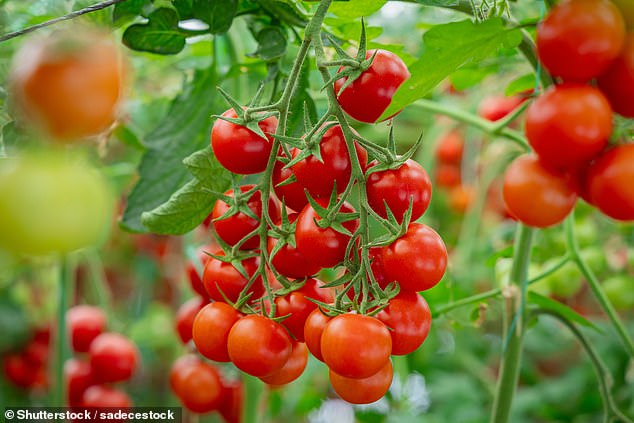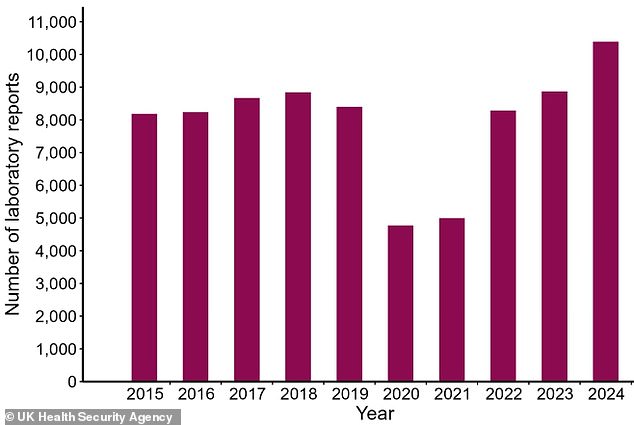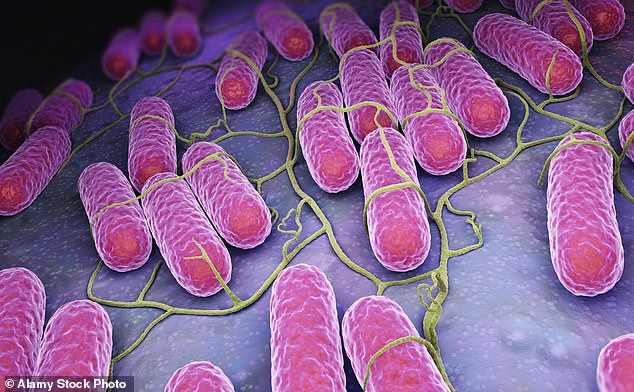Health officials have sounded the alarm over a surge in potentially deadly salmonella linked to tomatoes.
More than 100 people were sickened, with at least 14 hospitalised by two strains of the diarrhoea-causing bug in 2024.
The cases, also believed to have been caused by the fruit, were not confined to a specific area of the UK, instead reported across the country, according to UK health and safety watchdogs.
Testing revealed all cases the infection were caused by the rare strains Salmonella Blockley, also referred to as S. Blockley, and Salmonella Strathcona, which the UK Health Security Agency (UKHSA) warned is particularly severe.
Cases of S. Blockley are more often seen in east Asia and the US, and have only been recorded in European countries a handful of times.
It comes as separate UKHSA data released this week found salmonella cases have surged in the first three months of 2025, up on 2023 and 2024.
Salmonella is a group of bacteria that infects the gut of farm animals—and typically affects meat, eggs and poultry.
The nasty bug usually also causes sickness and a fever that clears up in days. However, it can be fatal.

The cases, also believed to have been caused by the fruit, were not confined to a specific area of the UK, instead reported across the country, according to UK health and safety watchdogs

UKHSA figures released last month showed salmonella cases hit a record decade high in 2024, soaring by almost a fifth in a single year to over 10,000 cases
On average, it takes from 12 to 72 hours for the symptoms to develop after swallowing an infectious dose of salmonella.
Those most at risk at suffering severe illness from a salmonella infection include those with weakened immune systems such as children and the elderly.
If people become seriously ill, they may need hospital care because the dehydration caused by the illness can be life-threatening.
According to the 2024 UKHSA data, there were 81 cases of S. Blockley confirmed by lab testing, all linked to tomatoes.
Of these, at least 14 were hospitalised.
Tomatoes were also blamed for a Salmonella Strathcona outbreak that affected 24 people.
But it is not known where the tomatoes were grown, be it from the UK or if they were imported from another country.
Research has suggested the texture of tomatoes can make them more prone to the bacteria and the risk increases as they are often eaten raw and not cooked, which would usually kill off any bugs.

Salmonella is a group of bacteria that infects the gut of farm animals—and typically affects meat, eggs and poultry
Contaminated water supplies used as the tomatoes grow can spread salmonella. It can also persist in the soil and contaminate them as they grow.
A separate salmonella outbreak with 109 cases was linked to red meat.
UKHSA figures released last month showed salmonella cases hit a record decade high in 2024, soaring by almost a fifth in a single year to over 10,000 cases.
Children under 10 years old were particularly affected, accounting for 21.5 per cent of cases.
Dr James Cooper, deputy director of food policy at the FSA, said: ‘We are working together to understand the reasons behind the rise in salmonella cases, as well as trends in other pathogens.
‘This analysis will help us take the necessary action to protect public health.
‘We’re also working with industry and local authorities to support businesses to meet their legal responsibility to make sure food is safe.’
But separate data this week showed cases in the first quarter of 2025 were even higher than 2024.
Some 1,588 cases were logged between January and March 2025, up on the 1,541 reported over the same period in 2024.
By comparison, there were 1,328 reports between January and March 2023.












